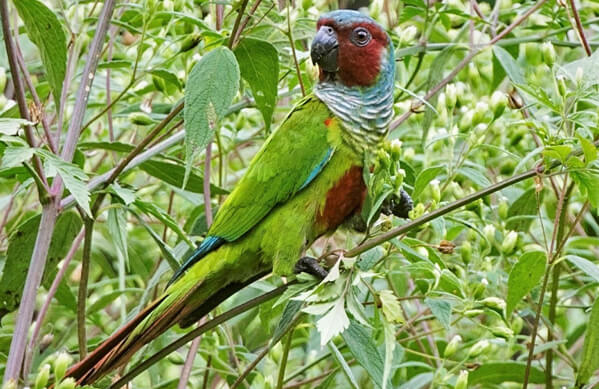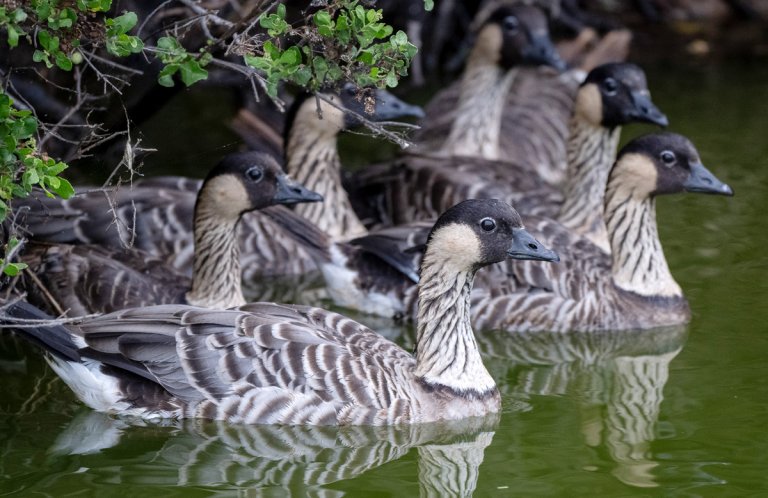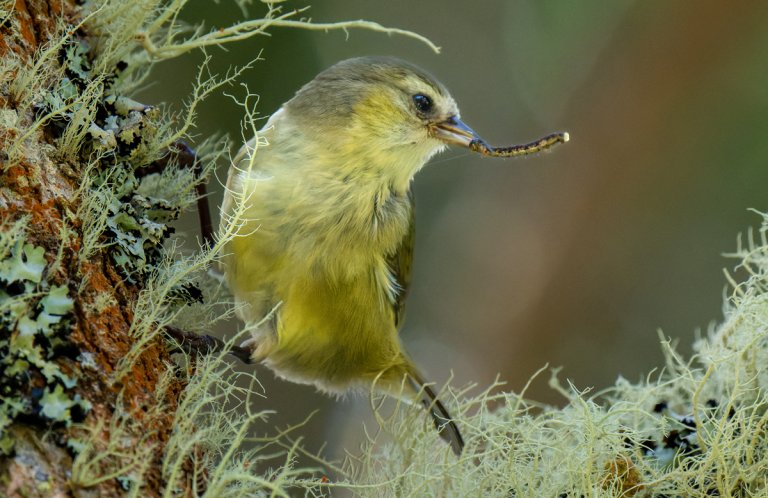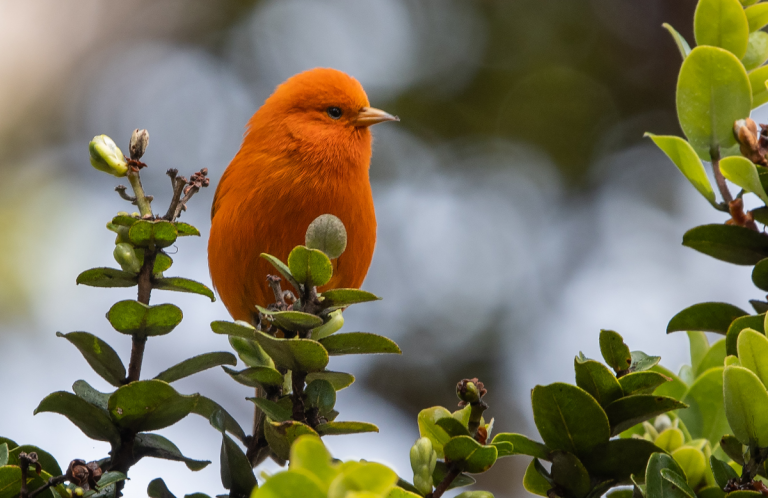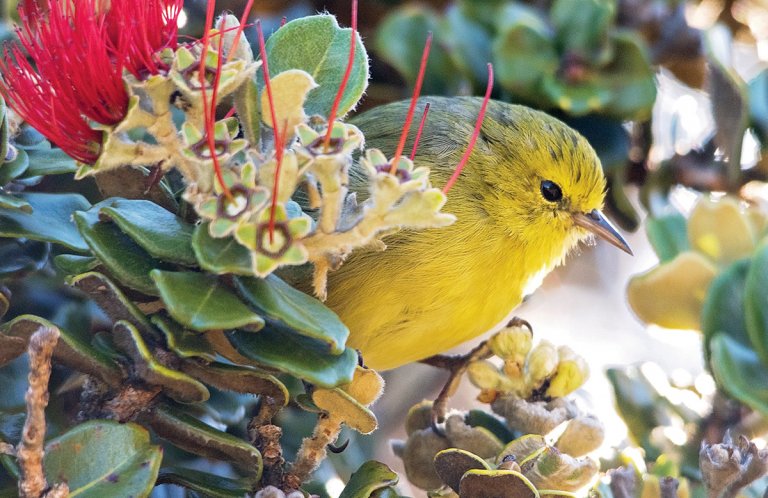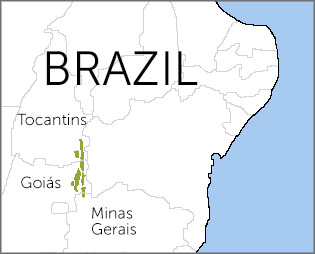 Once known as Pfrimer's Parakeet, the colorful Goiás Parakeet only exists in a small area of northeastern Brazil characterized by dry forest growing in limestone-rich soils studded with rocky outcroppings. These forests are surrounded by Cerrado (savanna) habitat, itself a threatened ecosystem sheltering other declining bird species, including the White-winged Nightjar and Cock-tailed Tyrant.
Once known as Pfrimer's Parakeet, the colorful Goiás Parakeet only exists in a small area of northeastern Brazil characterized by dry forest growing in limestone-rich soils studded with rocky outcroppings. These forests are surrounded by Cerrado (savanna) habitat, itself a threatened ecosystem sheltering other declining bird species, including the White-winged Nightjar and Cock-tailed Tyrant.
Dirty Dining
Like its larger relatives, the Goiás Parakeet indulges in a peculiar feeding habit, gathering in groups to munch on clay and mineral powder at river banks and limestone cliffs. Scientists believe that this behavior — known as geophagy (literally "eating earth") — helps to neutralize toxins in the parrots' fruit-based diet and provides necessary nutrients, such as salt.
A local name for the Goiás Parakeet is “Barreirinha," derived from the Portuguese word for mud (barro) and referring to its habit of feeding in muddy areas.
A Different Bird
The Goiás Parakeet was once considered a subspecies of the Maroon-faced Parakeet, also known as the White-eared Parakeet (Pyrrhura leucotis). Now, it's understood to be a distinct species (at first called Pfrimer's Parakeet) based on DNA, range, and differences in habitat and plumage. The Goiás Parakeet is closely related to the Gray-breasted Parakeet, another rare Brazilian endemic that was similarly split from the Maroon-faced Parakeet.
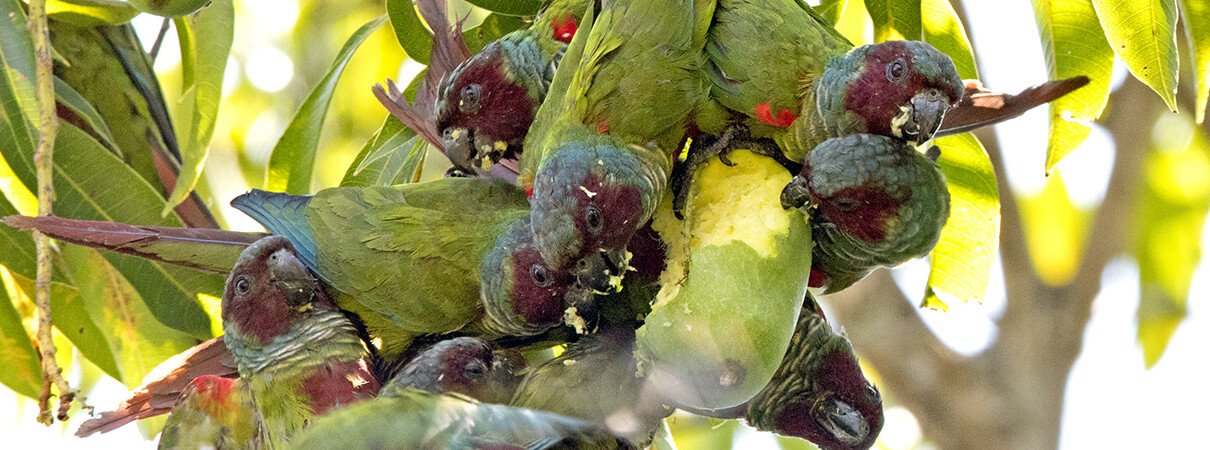
Goiás Parakeets feeding, by Ciro Albano
Noisy Family Gatherings
Like others in its family, such as the Golden-plumed Parakeet and El Oro Parakeet, the Goiás Parakeet is highly social, usually seen in groups of 15 to 20 birds outside of their breeding season. They are relatively inconspicuous when feeding in the treetops on fruit and flowers, but hard to miss when they're flying about in noisy groups. Listen to this bird's loud call:
(Audio by Ciro Albano, XC57811. Accessible at www.xeno-canto.org/57811
Goiás Parakeets don't build nests, but instead lay their eggs in a tree hollow — a behavior they share with others in the parrot family.
New but Fading Species
This relatively new species is already in big trouble, as its tiny range continues to shrink due to habitat loss from logging, fires, livestock grazing, and conversion to pasture. Goiás Parakeets are sometimes captured for the pet trade as well.
With ABC support, local researcher Tulio Dornas is evaluating the Goiás Parakeet population and creating a Species Action Plan that will target key areas for additional protection. ABC has also worked with the Federal University of Tocantins to encourage the creation of private reserves in this bird's habitat.
Donate to support ABC's conservation mission!





































